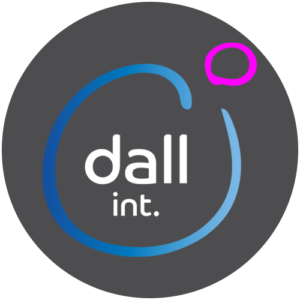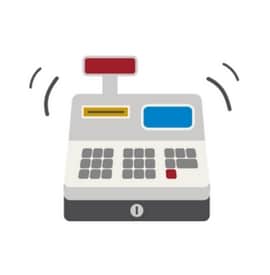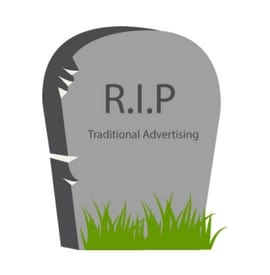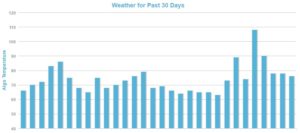HubSpot is a fantastic tool for gaining business insight that can help inform your marketing efforts. Since onboarding clients on to HubSpot we have been able to open up their customer and sales data using HubSpot custom reporting to help both us and them understand what is really working for their business and where planned marketing efforts should focus.
The easiest way to demonstrate the true value of custom reporting for gaining business insight is to take you through a real example of where we applied this for a client. We also have another post on the process you can run through if you want to try this for yourself.
Example case: What is the true value of returning business?
One of our clients came to us with the hypothesis that returning customers were driving no value for their business. We sought to prove or disprove this theory with HubSpot custom reports since none of the standard reports covered this and since we knew there would be some data anomalies to consider.
The first step in solving this problem was to adapt their hypothesis into a question that we could use custom reports to answer. We formulated a question that included a metric, timeframe and dimension (see our recommended process for why these are important) and agreed this question with the client:
What percentage of revenue in 2022 came from returning customers?
Key: Date Filter / Comparison Dimension Metric
We decided on the properties that would best give us this info from the client’s HubSpot portal based on what was relevant and which properties held the most data:
- Percentage of revenue = ‘Amount in Company Currency’ (revenue with exchange rates between markets applied)
- 2022 = ‘Deal Close Date’ (the date that the order was closed)
- Returning customers = ‘ ‘Number of Associated Deals’ (the number of orders a contact has)
As the revenue property and order close date would need to come from the order data in HubSpot (Deal object) and the returning customer dimension from the data we held on the contact (Contact object) this suggested that a Multi-Object report (or the custom report builder) would be best for creating this report. See our step by step process for more information on determining the correct type of report.
Here is a wee demonstration of how we set-up this report using our own test data:
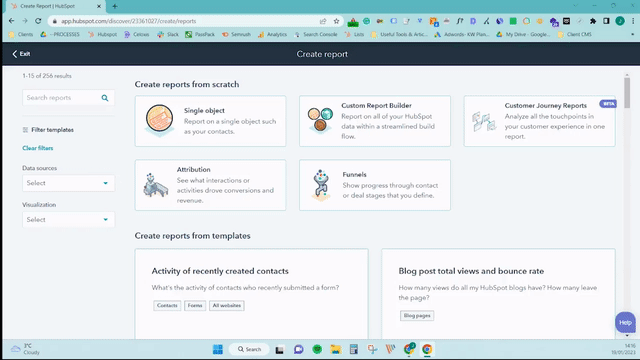
What value did we glean from this report?
We disproved the client’s hypothesis that returning customers were of no value to the business and showed that 27% of revenue was coming from repeat purchasers. This meant that we could make a good case for some of their ongoing marketing budget and efforts to be spent nurturing their existing one time purchasers to become repeat buyers.
This also caused us to ask more questions. For example: What are the key markets that repeat revenue is coming from? This in turn led us to start the process again and create some new custom reports.
These additional reports gave us further insights that could help us inform our 2023 marketing efforts:
- France has the highest proportion of revenue from 3 and 4-time purchasers so we should focus more marketing effort into nurturing these 1 time purchasers to buy again as they will be more likely to buy a third and fourth time.
- Belgium have a high proportion of returning revenue although overall revenue is not significant so we should focus on driving more contacts in from this market in the hope that that return rate continues.
This use of custom reports to answer key business questions was highly beneficial both for the client and ourselves and has helped inform our marketing strategy for 2023 with much more focus on returning customers. Stay tuned for the results later in the year!
If you would like any help from our HubSpot reporting experts on creating custom reports to gather business insight to inform your marketing approach get in touch today!
There is so much insight in HubSpot that it can be difficult to know where to start. That is why we have put together a step-by-step process for gathering key business insights using HubSpot custom reporting. You can find more information on why this is so beneficial in our case study.
1. Start by collecting questions
We always recommend starting by asking your own questions and collating questions from key stakeholders about what is working and not working for the business at the moment. Collating questions might take the form of a meeting with stakeholders with the help of a HubSpot playbook or even a survey that you send out to stakeholders to collect their big questions. Questions will pivot around what is working and not working at the moment: What type of contacts, campaigns, channels, and markets are driving revenue or qualified leads for the business?
2. Formulate your questions for reporting
Once you have a bank of questions, you can then start to consider whether they are formatted in a way that will make them easy to report on. If not, you may need to clarify them with stakeholders and reword them a little.
Each question should include the following:
- A metric that you are looking to measure e.g. revenue, number of leads, number of deals
- A date filter/ or time comparison e.g. in 2022, all time, compare December 2022 YoY
- A dimension that you want to break the data down by e.g. country, age, interest, campaign, channel
Examples of Well Formulated Questions for Reporting
- What were the top 10 countries by revenue in 2020?
- What are the top 10 product categories by revenue, purchased from the website, so far in 2021?
- What’s the all-time percentage breakdown of support tickets by country?
Are you able to answer any of your questions with HubSpot reports you already have set-up or reports that can be found in the report library? If so, wonderful. Most likely, you won’t be able to, which is why they are still unanswered questions. Don’t worry though, in our experience many business questions can be answered by the simple set-up of some custom reporting. The process of creating a custom report starts with defining your data points and sources.
3. Define data points (properties) and data sources (object-types)
Once you have your question formulated as per the above, you can then define which HubSpot properties you will need to report on and subsequently the HubSpot Object types (Contacts, Companies Deals, Tickets) that you will need as data sources in your report. If you are not that familiar with the main properties in your portal it can be helpful to use the property section within your HubSpot settings to search for the properties you want to report on and ensure they are populated with data.
So for example for the first example question we will need the following properties:
- Percentage of revenue = ‘Total revenue’ or ‘Amount in Company Currency’ (revenue with exchange rates between markets applied) both from the Deal (order data) object
- 2020 = ‘Deal Close Date =2020’ (the date that the order was closed)from the Deal (order data) object
- Country = ‘Country’ (a country that the contact has an address in) from the Contact object type
In this example, we are going to have two data sources (object types): Deals and Contacts.
4. Choose your report type and create your report
Once you have defined the data points you need, you will then be able to decide on the type of report that you are going to create.
There are four different types of custom reports and HubSpot provides detailed step-by-step guides on each:
- Single object reports
- Multi-object reports (custom report builder)
- Funnel reports
- Attribution reports
For pulling the type of business insights we are talking about you are most likely to use the first two report types. You can use the previous step to determine which one you should use – do you have more than one object data source? E.g., Contacts and Deals. In that case, you will need to use a multi-object report. If all of your properties are from one object, you can use the Single object report.
HubSpot has a fantastic step-by-step guide for creating both the Single Object and Multi Object reports. We also have an example case study on the creation of a Multi-Object report for one of our clients with a helpful video.
Once you have created your report, you will be able to collate your insights and possibly ask more questions which might induce the creation of further reports and analyses.
We have hopefully highlighted how you can use HubSpot to create reports that help you surface key business insights that can help inform your ongoing strategy and budgets. Have a go yourself or give us a call if you would like any help from our HubSpot reporting experts on creating custom reports to gather business insight.
Dall int. welcomes new members to power alliance to address global digital marketing challenges.
Attacat has today announced that is has joined Dall Int, a pan European alliance of independent digital marketing agencies. Attacat will strengthen the European footprint of the alliance by providing UK digital marketing expertise to other member agencies and their international clients.
Dall Int. is a family of best-in-class, independent digital marketing agencies that offer a more customer and knowledge-centric alternative to the big international media holding groups. The alliance was officially launched on October 17th 2017 by a select group of agencies that belong to the top 3% of Google Premier Partners in EMEA. Dall Int. member agencies share local knowledge and expertise, engage in joint product development and cooperate on international client projects.
“We want to ensure international customers best-in-class local expertise provided by trusted, top-performing and visionary digital marketing agencies. Dall Int. is therefore honored to welcome Attacat to the alliance. The agency represents what we believe is the digital agency of tomorrow and has proven to be very successful in their home market”, according to Allan Jørgensen, chairman of Dall Int.
Attacat’s founder and MD, Tim Barlow said: “This is a huge opportunity for both Attacat and our clients. Those already operating internationally and those with ambitious growth aspirations should be massively excited about the possibility of pan European collaboration across product and service. All of which can be leveraged by being part of this respected alliance of Google Premier Partners. Looking forward to a close working partnership with all agencies.”
With the addition of the Attacat, Dall Int. alliance counts over 460 specialists, nearly 1100 clients and manages over 150 million euro in annual ad spend. Areas of expertise include display and social advertising, organic and paid search, analytics and marketing automation in both B2B and B2C industries across Europe. As of today Dall Int. provides local digital marketing expertise and native language proficiency in the Nordics, The Netherlands, United Kingdom, Germany, Belgium, France, Italy, and Poland as well as Eastern and Central Europe.
What Is Traditional Marketing?
Overwhelming choice and a burst of colour is what greets us in most supermarkets today. It’s hard to believe that until the 1950s, plain packaging claimed the shelves of our local greengrocers.
Door-to-door salesmen made their way around our neighbourhoods. Subliminal messaging sneaked passed our senses. We teetered on the brink of modern advertising. Pointed shoes and coiffed hair to envy ‘Mad Men’ made way for ‘modern’ marketing.
Traditional Marketing Mix
Almost 7 decades later, the fundamentals of marketing remain the same. The way in which we ‘sell’ products still rests upon The 4Ps – product, price, place and promotion. The sale of services also requires the consideration of 3 extra ‘Ps’ – people, process and physical environment.
Designed to lead customers and prospects through the ‘sales funnel,’ the 4 (or 7) Ps form the basis of any marketing strategy. Today’s funnels are conceptual tools based on the AIDA model – awareness, interest, desire and action.
When we consider how and where digital marketing fits into the traditional marketing mix, it would be easy to assume that it only applies to promotion. However what makes digital marketing so unique and powerful is that touches upon each element of the 4 and 7Ps.
Traditional Marketing Channels
‘Pull’ marketing tools were the only channels marketers had at their disposal for many decades. These included above the line advertising – newspapers, magazines, radio, television and billboards. Below the line advertising – flyers and brochures – also proved popular.
Though the marketing channels available to us have grown remarkably, what hasn’t changed is the approach to their use. Integrated marketing campaigns still employ multiple channels at one time to maximise the reach and impact of a campaign.
With digital marketing keenly in play, integrated marketing campaigns today are likely to see a combined use of on and off-line media at any one time. As well as trying to facilitate the very best marketing tool of all – word-of-mouth, or viral, marketing.
What Is Digital Marketing?
The holistic representation of a brand online and the optimisation of its presence to achieve goals, digital marketing has by no means replaced the traditional marketing mix or made traditional channels redundant.
We know this because ads still flood our screens and reading material everyday. However digital marketing has changed and expanded the landscape within which these ads reach us.
When our TVs only had 5 channels (3 of which would actually run ads) television advertising was a fairly limited, and expensive, platform. Now our screen time has been completely revolutionised. We consume video content via streaming services, smartphone apps, on social media feeds. Every, single video is an advertising opportunity.
Similarly the way in which we consume copy is not limited to the pages in our hands. From 280 character tweets to extensive blog posts or online publications, ‘print’ advertising is no longer just in print.
Digital Marketing Channels
Consider the exponential rate at which digital marketing channels are being created and developed. Then compare this level of innovation with the many decades our traditional marketing channels remained the same. Our current marketing landscape is unprecedented. The reason for this? The advent of the internet.
The internet revolution has since led to the advent of email marketing, websites, blogs, social media (organic and paid), SEO and SEM. Digital marketing channels as we know them today.
As the internet has become more and more sophisticated over the past 30 years, so too have our digital marketing channels. This has prompted digital marketers to keep their skills sharp and their knowledge constantly up to date.
How Can Digital Marketing Help Your Business?
Much like the early days of traditional marketing, digital marketing had somewhat unruly roots. The early world wide web, unregulated by the Google algorithms of today, proved a keyword free for all. When you consider that Google is only 20 years old, it is clear that SEO and digital marketing is still a relatively young industry – with endless opportunities.
With technology, platforms and Google’s algorithm constantly evolving, it can be very difficult to keep up. You are the expert in your business and we are the experts in ours, so if you need a hand with your digital marketing – get in touch.
A lot of Digital Marketers are continually talking about split testing, and the importance of it to the success of a paid campaign. This blog outlines what all the fuss is about and how to conduct an ad copy test effectively.
You may think you know what works creatively with consumers, but you never really know what works until you test it! On Adwords this is easy to do with ad copy and the benefits are significant.
Benefits
- The main benefit of testing ad copy on a regular basis is that it will lead to an increase in click-through-rate. By testing ad copy you can continually test what type of messaging is most engaging with your audience, allowing you to write more effective ad copy & create higher quality ads.
- This in turn will lead to improved quality score and reduced cost-per-click!
What to Test
There are multiple elements of an ad that you can test, from the description to the display URL. We would recommend starting with the headline. Consumers tend to have short attention spans, meaning the headline is often the only element of the ad that they actually read. This makes it crucial to the success of an ad and shows how important it is to test!However it is also important to test other elements of an advert, including:
- Description Line
- Display URL
- Landing Page
- Call-To-Action
When testing different ad copy you can try various strategies, such as:
- Capitalizing each word
- Adding in price qualifiers
- Using dynamic words
- Change the wording of your competitive advantage
How to Do it
Firstly decide which element you would like to test and write two variations of your ad within an ad group.
Label the ads so you can keep track of which ads your testing.
Change the settings of the campaign to rotate evenly/ rotate indefinitely, allowing each ad to have a fair chance of being shown.
- Do this within the campaign settings > advanced settings > ad delivery: ad rotation, frequency capping
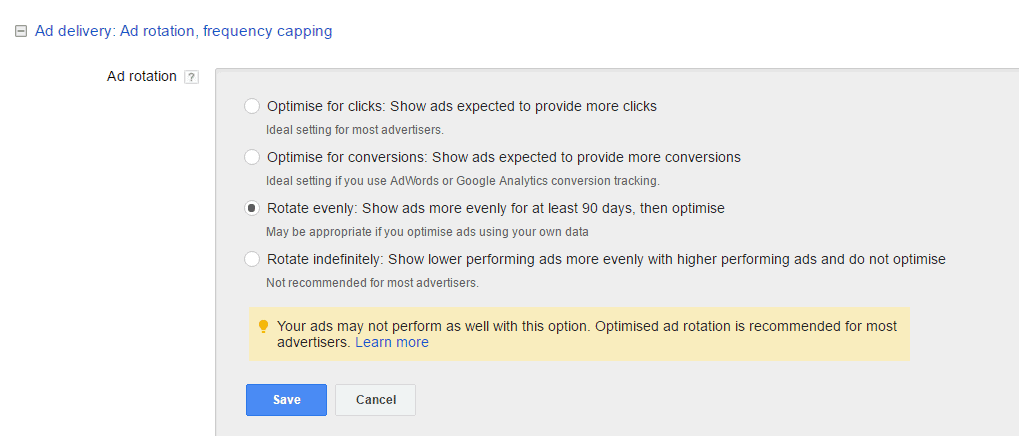 Run the ads simultaneously for a certain time. The time a test takes to reach statistical significance can depend on how much traffic you’re getting.
Run the ads simultaneously for a certain time. The time a test takes to reach statistical significance can depend on how much traffic you’re getting.
Test the ads using a split test tool to see whether the test has reached statistical significance and which advert has ‘won’. We would recommend using Cardinal path.
- CTR & percentage served will likely be the most telling measurements but you can decide which statistic is most important to you.
- It is important to use a PPC ad calculator tool to conduct a split test so you don’t randomly select a winner. You may think that one ad is clearly out performing another, but the statistics may show something different.
When your ads reach statistical significance there are two options
- Pause the ad that hasn’t done as well and create a new one with new ad copy to test against the winner.
- Or if you’re not sure whether the results are clear, you can leave the test running for a while longer so you can more accurately decipher which ad is better.
In conclusion ad copy testing is crucial, and will help the success of your account. Try to continually test your ads so that you’re constantly improving them. Start with the basics and go from there, you will soon start to see the benefits!
We have to say, there’s nothing like arriving to work early on a Monday morning to find the agency has been shortlisted for no less than 4 of the 8 awards at this year’s Google Premier Partner Awards 2016!
This comes after a record year for our agency and we couldn’t be more excited. Attacat was selected as one of the first Google Premier Partners back in July based on our fantastic ability to demonstrate knowledge and expertise in Google Advertising products. Being shortlisted further builds upon this honour and proves our hard work in Search, Mobile, Display and Shopping Advertising is paying off – most importantly for our clients!
We’ve been shortlisted for the following awards
- Search Performance Award
- Display Performance Award
- Shopping Performance Award
- Outstanding Premier Partner Performance Award
The best of the best
While we are humbled to be nominated for all the above awards, we are absolutely blown away to have been chosen as 1 of only 2 UK agencies nominated (out of a total 10) for the Outstanding Premier Partner Performance Award! This award takes into account not only the specific Google Products that we specialise in, but also the relationship with Google as a whole. Those listed have proven themselves to demonstrate innovation and measure impact to succeed in building their clients’ businesses and reach and exceed not only our clients, but our agency’s targets and goals.
The awards take place in Dublin on December 5th and we will be sending two of our finest to represent us (black ties and all)! The annual Google Partners Accelerate event, which we attended in both 2014 and 2015, will coincide with the awards and take place on December 4th. Again, it will include speakers and training sessions designed to assist agencies in accelerating their growth and success.
Check out the full shortlist here and stay tuned for the results in December! We are greatly looking forward to attending the event, learning more about the Google Premier Partner plans for 2017 and meeting and networking with the rest of the selected agencies!
Our ability to be shortlisted and compete alongside these elite agencies comes down to the hard work of the Attacat team and, of course, the willingness of our clients to let us do all we can to build their businesses and be successful. We couldn’t achieve the great things we do without the relationships and trust that have been built between Attacat and our clients and we thank all those who have supported us.
Stay tuned and wish us luck!
Great news! This post comes with not one but TWO Attacat New Media Breakfast presentations.
We’ve had the pleasure of presenting two topics at 4 breakfasts over the course of 2016 and have got them both in this wonderful wee package of a post. Sadly, you won’t get the additional script and amazing chat that comes along with the events but hope you’ll still find at least one nugget of interesting information to share at your next business lunch!
If you have any questions about the slides below, please leave them in the comments below or simply get in touch!
April 2016 – Pay Per Click Advertising
Presented by: Tim Barlow & Andrew Morgan
September 2016 – Analytics
Presented by: Tim Barlow & Kevin Thomson
There’s still a chance to catch the chat on Google Analytics in Glasgow, Friday September 30th! Grab your tickets here and learn how to make data work for you!
For more information on the New Media Breakfast and when the next one takes place near you, head over to www.newmediabreakfast.co.uk! October’s theme, presented by the host with the most, Gordon White of fatbuzz (Glasgow) will be all about Christmas, campaigns and promotions!
There have been reports of a huge amount of volatility in search results over the weekend of 3 September, and while it’s ‘early days’ we’re starting to see impacts of what is likely a core update to the Google ranking algorithm.
Both Mozcast and Algaroo have shown a big spike in movement in the Google search results pages:
What’s been affected?
It looks as though there has been a big shakeup of Google local, so local-intent searches and results have been noticeably impacted.
Secondly it appears as though content-rich sites may be benefiting, so content-thin sites or ecommerce may be more impacted. We’re also seeing some evidence of recognised brands getting another boost: Google have made it clear that users want to see brands they recognise.
You can read more information on SearchEngineWatch.
Attacat’s Head of SEO Joel Lumsden (@attacat_joel) was recently asked to present at the Turing festival. The full-stack marketing event has been running since 2011 and has brought to Edinburgh some of the biggest names in tech and marketing, including Moz’s Rand Fishkin. For those of you not lucky enough to attend, or if you want to give it another read, you can view Joel’s presentation below.
(image courtesy of top dude @MrGavinBell)
